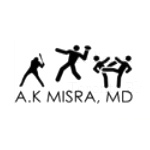Health Tips brought to you by U.S. HealthWorks Medical Group. Our experienced medical experts provide information here that we hope will broaden your healthcare knowledge.
As many Americans gear up for Thanksgiving and prepare to enjoy the tradition of watching football while roasting turkey, we believe it is important to remember the risk of concussions that athletes face when playing football and other contact sports. Today we speak with Dr. A.K. Misra, medical director for U.S. HealthWorks in South San Francisco. Dr. Misra is double board certified in Sports Medicine and Internal Medicine. He has provided his expert opinion in multiple media interviews on the topic of concussions.
Q: To refresh everyone’s memory, what exactly is a concussion?
A: The definition of “concussion” has undergone some revisions in recent years. The most recent revision happened at the Fourth International Conference on Concussion in Sport in Zürich in 2012. To paraphrase, the Zürich Guidelines specify concussion as, “A brain injury caused by traumatic forces that alters the way the brain functions and presents with a range of signs and/or symptoms that may or may not include loss of consciousness.”
The above definition has limitations and leaves room for interpretation. Nonetheless, it is probably the best working way to begin speaking to this complex neurological condition.
Q: How does one identify a concussion in others or know if they have one themselves?
A: Undoubtedly this is one of the most challenging aspects of a concussion. If someone has incurred one, it is often difficult for them to understand what exactly they are experiencing. As far as knowing if this has happened in others, the concern should come about anytime a deviation from the baseline neurological function of a person is observed. In such an instance, immediate evaluation by a health care professional with experience in this condition (a Sports Medicine physician, a Neurologist, a PM&R physician and/or an Athletic Trainer) should be sought. Here is a good outline of the common elements that are seen in patients with a concussion:
Q: How dangerous are concussions?
A: This is an area of significant debate, however, overall concussions are taken as a very serious matter with far-reaching implications that can be both life-threatening and life-shortening. Much attention has been drawn to this problematic condition due to the heightened popularity of the NFL and tragic high profile suicides of many former NFL players in recent years. The studies of their brains have shown a disturbing trend consistent with brain damage secondary to repeated head impacts, also known as CTE (Chronic Traumatic Encephalopathy). See this piece from my colleague, Dr. Sanjay Gupta of CNN regarding this recent data.
The end result is a new awareness of the health hazard to all who engage in such activities, but especially to youth athletes. Youth athletes are the highest risk for numerous reasons, the most important is that their brains are still developing. Studies show brain development continues on until about age 26, which would span well into the strata of the professional athlete. One of the more chilling documentaries speaking to this is based on a book called A League of Denial. I recommend either the book or documentary to learn more about this. There also is a movie coming out in December based on the same called “Concussion” and this is the trailer for it.
Q: How are concussions managed?
A: Diagnosis of a concussion is time sensitive. There are numerous assessment tools, however once a concussion is even suspected, the first order of business is to employ what is termed, “neurocognitive rest.” This generally means resting the mind by assigning tasks no more intellectually challenging than either folding laundry or cleaning the dishes for about three days. No reading or school work, no cell phones, no Internet or video games – which is obviously challenging to achieve, especially for youth athletes.
Q: What does the future have in store when it comes to concussions?
A: Today, more than ever, there is an intense level of public interest in this topic resulting in high-level research, which I believe is for the greater good. The discoveries of the past five years suggest more science on this front will be rapidly forthcoming. On the basis of these findings, further medical directives and recommendations will be formulated. While nobody knows what tomorrow will bring, it is an exciting time in this area of study, as I expect much more to be coming to the community on prevention and management in the months and years ahead. This recent 60 Minutes piece goes into depth on much of this information as well.
Below is a table from the Institute of Medicine about the prevalence in our community as it relates to youth sports, both in high school and college Please take note of how high women’s soccer is on this list:








